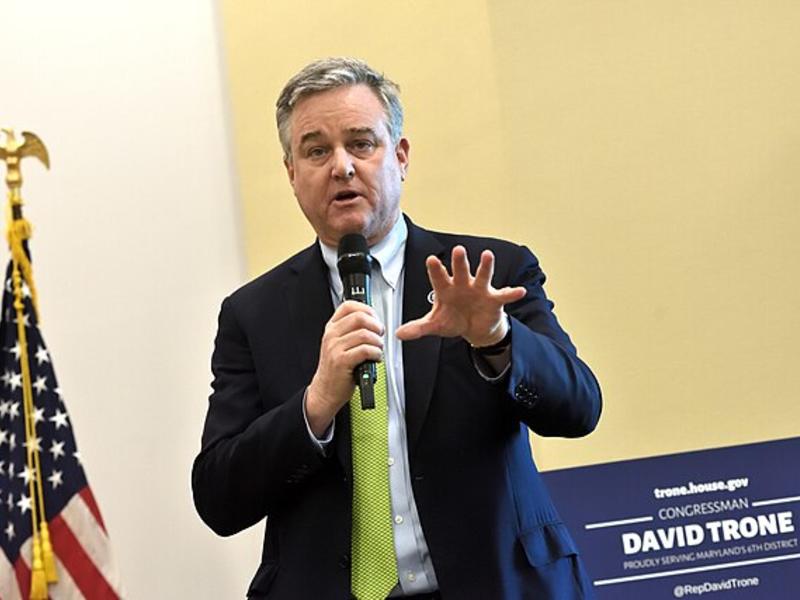
When incumbent presidents run for reelection, it is normally a referendum on that incumbent. If that turns out to be the case again this time, what specific aspect of the Trump presidency will be judged—voter’s personal views of President Trump, or more broadly whether Americans want to renew his contract for another four years? Or will it be purely about his handling of the coronavirus crisis? Will it be about Trump’s stewardship over the economy, and if so, about his first three years in office, or where it is for all of 2020, or just where it is over the past 60 or 90 days before the Nov. 3 election? Or could it be about something else, either involving Trump or the now-presumptive nominee, Joe Biden? If we only knew.
Historically, economic performance is a huge factor in incumbent presidential outcomes. On Friday, two surveys of 45 top economists were released; one from Blue Chip Economic Indicators, the other from the National Association for Business Economics. For the just-completed first quarter of 2020, Blue Chip’s consensus forecast showed a change in annualized real gross domestic product of minus-3.8 percent, while the NABE’s survey showed a slightly less pessimistic minus-2.4 percent. For the current second quarter, Blue Chip’s economists predicted a minus-24.5 percent decline, just shy of the NABE’s minus-26.5 percent forecast.
Both surveys projected a bounce back in the third quarter. Blue Chip sees a sharper turnaround of 7.4 percent, whereas NABE predicts a much more modest 2.0 percent growth. For the fourth quarter, Blue Chip forecasts 7.9 percent growth, compared to NABE’s 5.8 percent. Of course, economists are not epidemiologists (or vice versa) and both professions are trying to divine the consequences of something that America has never experienced, an extended shutdown of much of the country and economy.
The truth is that the coronavirus and the economy are inextricably intertwined. The longer and worse the pandemic is, the greater its sustained impact on the economy. That’s why the decision on when to loosen the clamp on the public is so critical. Like the Goldilocks fable, will the porridge be too hot, too cold, or just right? Loosen the clamp too quickly, and a second or even third wave could result in even more economic destruction. Keeping it on too long would unnecessarily prolong individual and collective misery.
Trump acknowledged how difficult—and consequential—the decision will be at his Friday news briefing, when he said, “I’m going to have to make a decision, and I only hope to God that it’s the right decision. But I would say without question it’s the biggest decision I’ve ever had to make.”
A person who played a senior role in Trump’s 2016 campaign and remains close to the White House gave me the impression last week that their view was binary, like a light switch: The question is when to flip the economy back on after a long period of relative dormancy. This was just like the flu, I was told, only a lot more contagious. Once the economic switch is flipped, growth would come roaring back, virtually assuring Trump’s reelection.
But while the American people have proved to be remarkably resilient in the face of coronavirus adversity, how fast can the economy bounce back?
The White House itself has acknowledged that bringing the economy back online may have to be done in stages, perhaps based on the COVID-19 situation in each county. Or perhaps older Americans and those with underlying risk factors may need to shelter in place longer than others.
Democrats worry that this means life goes back to normal in more lightly populated rural and small town (red) America, while urban and suburban (blue) America remains locked down. But on the other hand, bringing the economy back online county-by-county, with less-populated areas going first, could delay the resumption of growth. So maybe that economic bounce back won’t be there in time before the election, as Trump supporters so fervently pray.
The Trump reelection strategy has long been to keep his base not only intact but enthusiastic, with economic growth being the not-so-secret sauce that would get them to 270 electoral votes, regardless of the popular vote. But now Trump finds himself racing against the clock, trying to get economic growth back to where it needs to be before Nov. 3. But that calibration—how to bring growth back without risking a second or third wave of the pandemic—that is a challenge befitting a chief executive.
This story was originally published on nationaljournal.com on April 14, 2020










Subscribe Today
Our subscribers have first access to individual race pages for each House, Senate and Governors race, which will include race ratings (each race is rated on a seven-point scale) and a narrative analysis pertaining to that race.